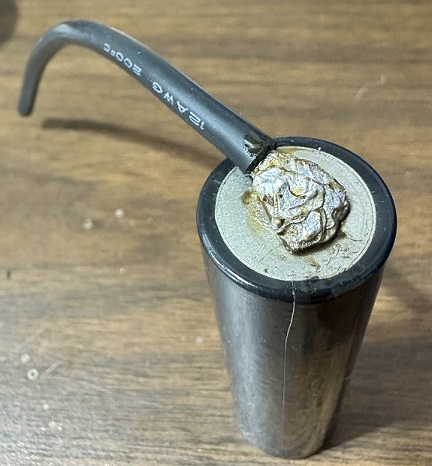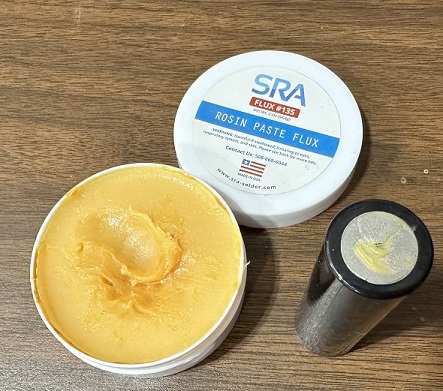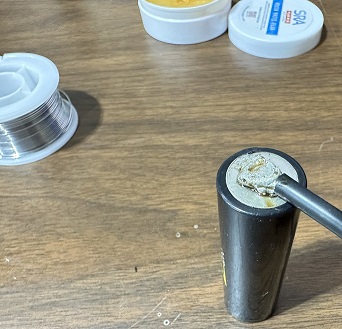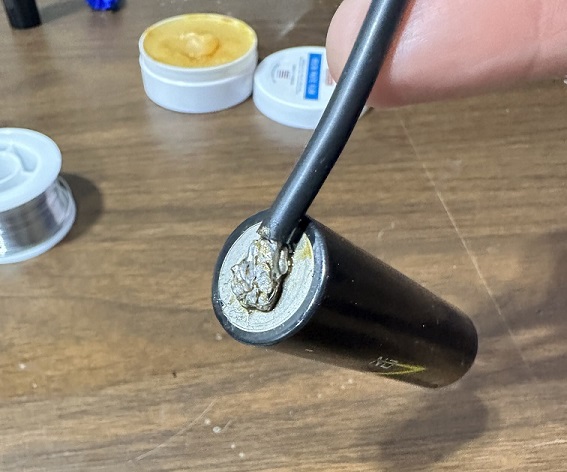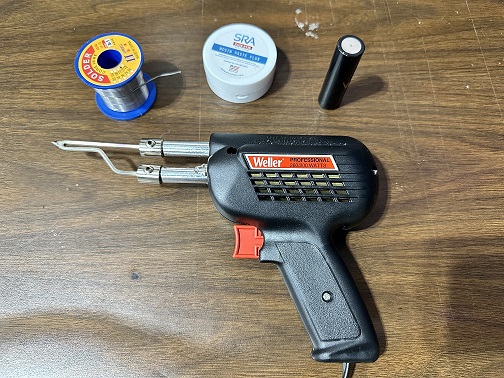
Soldering Lithium Batteries and Cells
Table of Contents
- Can You Solder Lithium Ion Batteries?
- Can you solder directly to a battery?
- Is It Safe To Solder Lithium Ion Batteries
- How To Solder Lithium Batteries
- Lithium Ion Battery Soldering Steps
- Can I solder instead of spot-welding a lithium-ion battery?
- Does Soldering Damage 18650?
- Is Soldering As Strong As Welding?
If you don’t have a spot welder and aren’t familiar with the latest weldless battery options on the market, then you are probably wondering how to solder lithium batteries. As you have probably heard by now, it's not ideal to solder lithium-ion battery cells. While a great solder joint can carry just as much current as a spot weld, if not more, the soldering process requires an intense amount of heat that does not dissipate quickly. This heat damages the cells that it gets to, which manifests itself as a slightly lower capacity. In this scenario, major problems can occur down the road as a result of cell group imbalances.
If, however, you are either very determined or have no other option when building a lithium battery pack soldering is certainly possible.
To solder lithium batteries properly, you need a very high-power soldering iron. This may seem paradoxical at first, but a high-powered soldering iron is able to perform soldering operations much quicker, resulting in less overall heat being imparted into the cells from the hot solder. Work quickly, spending as little time as possible with the soldering iron on the cells. If you are going to solder lithium batteries, apply lots of flux to the cell before touching it with the soldering iron. This will ensure that the cell surface is in the best possible state to be soldered which will require less soldering time for a good connection.
In this article, we will discuss how to solder lithium batteries. We will go over some essential do’s and don'ts, as well as provide some insight as to why soldering lithium batteries can be harmful to the cells. We also have written on how to spot-weld a battery and the pros and cons of spot welding over soldering lithium.
Can You Solder Lithium Ion Batteries?
Yes but very carefully and very quickly. Soldering Li-Ion batteries like 18650 and 21700 cells puts a lot of excess heat into them during the soldering process. This extra heat does a small amount of damage to whatever cell it gets to.
The longer a given cell or cells stays hot, the more capacity they will lose. If you are using a low-power soldering iron that requires an extended amount of soldering time on the cell, it could overheat the battery to catch on fire. For this reason, extreme care, caution, and skill must be used when soldering lithium batteries.
Can you solder directly to a battery?
Yes. When soldering lithium-ion batteries, the cell almost always gets damaged to some degree from the intense amount of heat emitted by the soldering iron. The only thing you can really do is minimize this level of damage, never quite eliminate it.
What’s even worse is that even if you do get your technique honed enough to minimize damage to the cell as much as possible, you then have to hone that technique, even more, to ensure that a consistent amount of the least possible damage is applied to each cell that you solder.
Cell Level Fusing
Cell level fusing is the practice in which each and every cell has a fused link to the bus bar. This is in contrast to most battery construction techniques that weld each cell to an unfused common conductor.
Soldering has generally been employed in cell-level fusing, but there are several online vendors now that produce and sell sheets of nickel with fuses cut into them. These innovative products make it possible to do cell-level fusing without having to deal with the glaring drawbacks that come along with soldering lithium batteries.
Soldering Iron Requirements Lithium Batteries
If you plan on soldering lithium batteries, then you are going to need a very powerful soldering iron. Not 65, 75, or even 85 watts. To solder a lithium battery, you’re going to need at least 100 watts of power at the tip. Having triple-digit watts at your disposal is required to be able to get in there, form an excellent connection, and get you- quick.
It may seem counter-intuitive, but the best soldering iron-to-solder lithium-ion batteries is going to be the hottest one. The fact that heat is the problem might make one think that a hotter soldering iron would be worse for soldering lithium batteries, but that would mean that you would have to spend much more time heating the cell to get the solder to properly melt.
[[ aff type=aff ~ link=https://amzn.to/3NKhOgF ~ title=`Weller Soldering Iron` ~ image=https://admin.cellsaviors.com/storage/weller-soldering-iron.jpg ~ description=`This soldering iron has a very high output @ 260/200 watts, this is your best bet when looking to solder lithium batteries. ` ~ height=small ~ buttonText=`Check Price` ]]
Is It Safe To Solder Lithium Ion Batteries
Soldering lithium-ion batteries is generally not recommended because the heat generated by soldering can damage the battery and potentially cause a fire. If the battery must be soldered, it should be done by a professional with experience working with lithium-ion batteries. It is also important you learn lithium battery safety procedures before attempting to solder cells.
Here is a general overview of the steps to safely solder a lithium-ion battery, but it is not recommended to do it yourself:
Use a High Power Soldering Iron
Use a high-wattage soldering iron (100 watts or more) to minimize the amount of time needed to be spent with the soldering iron in contact with the battery.
Solder Quickly
Keep the soldering iron in contact with the battery for as short a time as possible to minimize heat damage.
Be Mindful Of Fumes
Unlike a spot welder, soldering releases a high amount of fumes. So, when you are soldering lithium-ion batteries, make sure to work in a well-ventilated area to avoid inhaling any toxic fumes released by the battery.
Fire Prevention
Keep a fire extinguisher nearby in case of an emergency. It is also important to note that soldering lithium-ion batteries can be dangerous, and it is important to take all necessary safety precautions, including wearing appropriate personal protective equipment.
It's much safer and more efficient to use a spot welder for lithium-ion batteries, specially designed for this purpose. Also, using a spot welder presents little to no risk of damaging the cells so long as your weld power is not set too high.
How To Solder Lithium Batteries
It takes a great amount of care and skill to solder lithium-ion batteries. You can’t just learn how to do it on your first build. That is just not going to be possible. This is because the type of soldering that needs to be done to -and it’s hard to say this- “properly” solder lithium-ion batteries, is an extremely skilled type of soldering that takes lots of experience to get right.
This is in contrast to spot welding, where after a few adjustments of your welder and learning how much pressure to use, making great connections is easy. When learning how to spot weld, all it takes is a handful of cells to do test welds on to get good enough at it to be able to weld a lithium-ion battery pack with no problems.
When soldering a lithium battery, you have to be very quick when applying heat to the cell and you need to be extremely confident in the connection you are making. If you have never soldered before, you will not be able to learn this by doing some tests on a handful of cells. The type of soldering work required to properly solder lithium batteries is a craft that needs to be learned over a long period of time.
If, on the other hand, you are a highly experienced solderer and you are looking into how to solder lithium-ion batteries, you’re in luck. If you absolutely have to do it and if you are really good with a soldering iron, then it is possible to solder lithium batteries.
Lithium Ion Battery Soldering Steps
Again, you really should not be soldering lithium-ion batteries unless your project has specific requirements for it as it can be dangerous to you and the cell. If you absolutely have to, here is a general overview of the steps required to solder a lithium-ion battery:
Step 1: Disassemble the battery pack, if you need to, so you can get to the cells.
Step 2: Clean the cell ends so that when you solder, you will be able to make a secure, strong connection.
Step 3: Turn on the soldering iron and allow it to heat up all the way. Regardless of what the temperature display says (if your soldering iron has one) just ignore it and wait a few more minutes to make sure the tip is completely saturated with heat.
Step 4: Apply a large amount of soldering flux to the work area. Flux removes the effects of air from the solder joint, which makes soldering a lot easier. This will ensure that the best possible connection is made.
Step 5: Place the wire or other conductor on the cell where you will be soldering. Then, using the tip of the soldering iron, apply pressure to the wire to heat it up.
NOTE: This step won’t take long. You just need to introduce heat into the junction in preparation for the next step.
Step 6: With the soldering iron still pressed down firmly onto the wire or other conductor, feed the solder directly into the soldering junction.
WARNING: Do not attempt to apply solder to the soldering iron tip before doing the work. This seems like a convenient way to have an extra hand, but the built-in flux burns off and it can make soldering more difficult. The application of flux in step 4 helps mitigate this, but there are other issues caused by using this method and it should be avoided.
Step 5: The moment the solder flows and you see that you have a good connection, remove the soldering iron as quickly as possible and allow the cell to cool. It's helpful to have a fan available at this stage so you can periodically cool the battery.
Step 6: Visually Inspect the connection to ensure a good solder joint. If you see any impurities in the solder, or if the solder blob is not totally smooth and shiny, you will have to redo the connection.
I can’t stress this enough:
Soldering lithium-ion batteries can be dangerous and will always do some level of harm to the battery. So, it’s extremely important to take all necessary safety precautions, including wearing appropriate personal protective equipment, and to only solder lithium-ion batteries when there is no other option.
Can I solder instead of spot-welding a lithium-ion battery?
While it is possible to solder lithium batteries, it's generally seen as a last resort. Spot welding actually produces much more heat than soldering, this heat, however, is extremely localized and only exists for a few milliseconds. Soldering, in contrast, is an overall slower process than spot welding.
This makes it so the heat produced by the soldering process has a much higher impact on a cell’s health that the more intense but much shorter-lived and highly localized heat generated by the welding process.
Does Soldering Damage 18650?
Yes. There is no way to avoid damaging 18650 cells if you solder them. You are introducing heat to the cell, this heat comes on slowly as the solder is introduced and dissipates slowly. Lithium batteries do not like heat and it causes some level of degradation to the cell being soldered.
Employing best practices for soldering lithium batteries merely reduces the damage inflicted to a minimum.
Is Soldering As Strong As Welding?
When compared to spot welding, soldering forms a much stronger joint. So, physically speaking soldering is stronger than spot welding. If soldered well, soldering can even be electrically stronger than spot welding.
The problem with soldering lithium batteries is that the heat from the soldering process damages the cells to some degree. Not only does it damage the cells, but it damages the cells to an inconsistent degree in most cases. This can cause the battery pack to come out of balance later on.
Conclusion
If you want to build a lithium-ion battery but you don’t have access to a spot welder, you may consider soldering a lithium battery together. It’s not impossible, but if you want to solder a lithium-ion battery, then you need to really know what you are doing and you need to be very experienced with soldering in the first place. No matter how good you are at it, soldering lithium-ion batteries will always affect their capacity.
Also, the cells will have their capacities affected in an inconsistent manner due to several factors involved in the soldering process. It’s true that an excellent solder joint can carry just as much current as a spot-welded one, but the spot-welding process introduces drastically less heat into the cell. When soldering, the solder stays hot for a very long time. This heat will inevitably damage the cells that it gets to, which will be all of them.
To be able to solder lithium batteries, you will need an extremely powerful soldering iron of 100 watts or more. A high-wattage soldering iron can solder much faster than a cooler-running one, which results in less heat getting to the cells. Solder the connections to the cells as quickly as you can, so that you spend the least amount of time as possible with the soldering iron in contact with the battery cells. Make sure to use a large amount of flux so that the cell surface is in the best condition to readily receive the solder.
We hope this article helped you learn everything you needed to know about how to solder lithium batteries. Thanks for reading!
